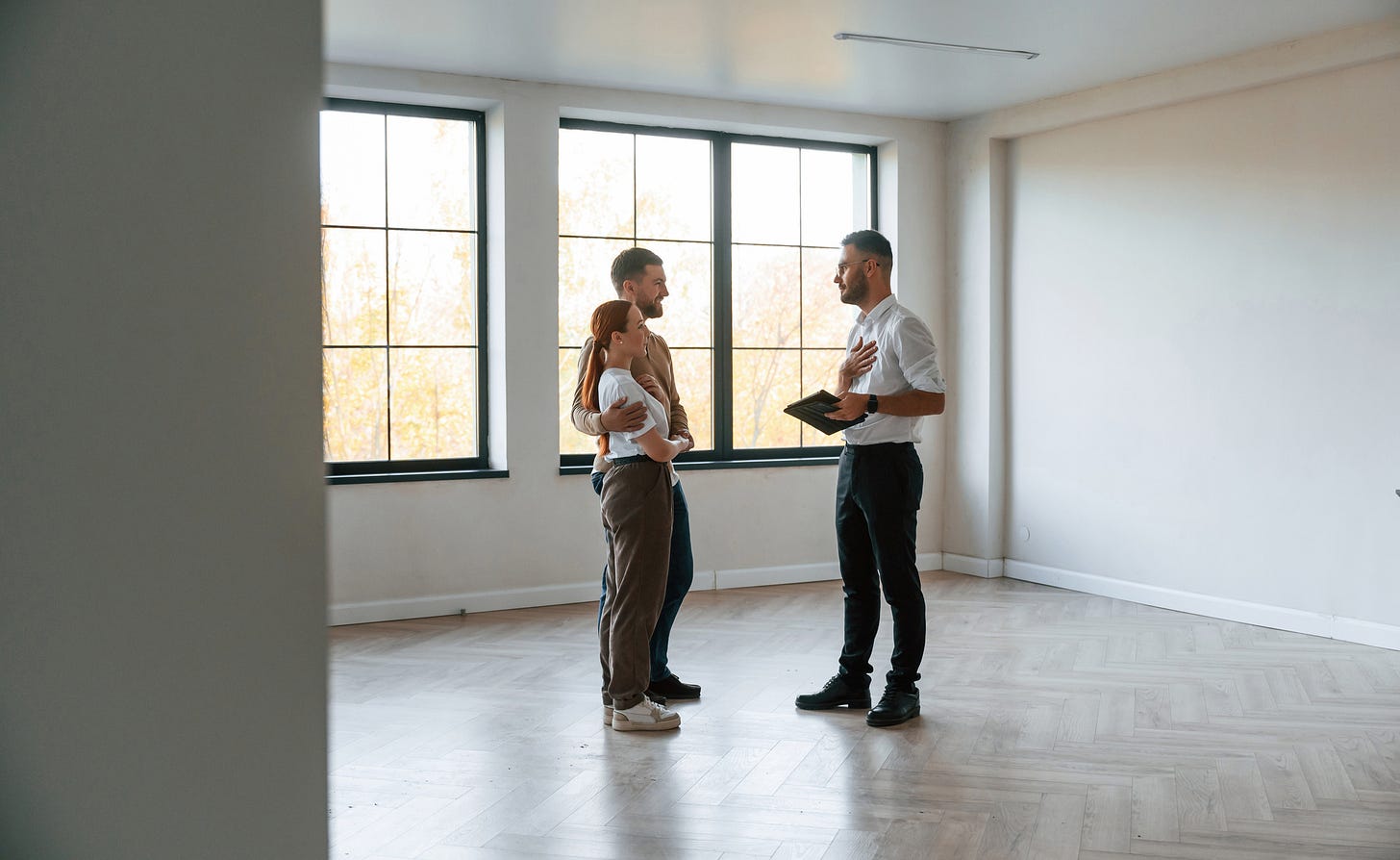Groundswell Property's Market Insights
Housing Approvals Rise but Construction Stalls, Renters Struggle, and Listings Climb: What’s Driving the Market This Week – as at 15 March 2025
Welcome to this week’s edition of Groundswell Property’s Market Insights, where we cut through the media noise and deliver real, data driven updates on Australia’s ever-changing property market.
Image Source: Pat Whelen, Unsplash
Key highlights:
The Australian property market continues to grapple with supply constraints, affordability pressures, and shifting investment trends. While housing approvals are on the rise, ongoing challenges in construction mean relief for buyers and renters is still some way off. Here’s what’s shaping the market this week:
🔹 Housing approvals are up, but actual builds remain stalled – Detached house approvals climbed 6.1% in the past quarter, but high costs continue to limit new housing supply.
🔹 Rental affordability worsens, but pressure is easing slightly – Tenants are still facing record-high rents, but an increase in rental listings across capital cities may provide some relief.
🔹 More properties hit the market, but older listings are lingering – Sydney and Melbourne see rising stock, signaling possible buyer hesitancy or unrealistic pricing.
🔹 Property Council pushes for a first-home buyer loan scheme – A proposed plan could cap interest rates for first-home buyers of new builds, reducing repayments by up to $1,087 per month.
🔹 In some suburbs, it’s now cheaper to buy than rent – Analysis finds pockets across SA, VIC, QLD, and NSW where mortgage repayments are lower than weekly rent costs.
As always, our goal is to provide evidence-based insights to help you make informed property decisions—whether you're buying, selling, or simply keeping a pulse on the market. Let’s dive into the data and insights shaping the year ahead.
Approvals Up, Build Starts Lagging
The latest housing approval figures are out, and if you are to believe the mainstream media coverage about it, houses will soon be popping up all over the place.
Unfortunately, although the latest data does show that approvals for houses are up in January 2025, it won’t make much difference to Australia’s housing crisis unless those properties are built.
What the latest Australian Bureau of Statistics figures show is that in January, there were 16,580 residential dwellings approved, which is 6.3% higher than December.
Total dwelling approvals in the three months to January 2025 were 14% higher compared to the same quarter in the previous year, with detached approvals up by 6.1% and multi-units up by 27.3%.
Unfortunately, with construction costs remaining high, many of these will not be built anytime soon.
The rise in detached house approvals shows that demand for units is continuing, according to HIA economist Maurice Tapping.
But he says there are still constraints on land, construction and investment.
“Despite modest improvements in housing approvals, Australia continues to face a significant shortfall in housing supply,” he says.
Rent Affordability Worsens
Rental affordability has worsened in the past 12 months, according to a new analysis of what tenants are now paying.
The PropTrack Rental Affordability Index shows that tenants are paying the highest rents in New South Wales, while Victoria is now the most affordable state for renters.
There is a glimmer of hope for renters, though, with the report saying rental market conditions are now showing signs of easing, with more properties available for rent in most capital cities.
The pace of rental growth was slower in 2024 than it was in 2023, and PropTrack senior economist Paul Ryan predicts it will continue to slow in 2025.
The report shows that in 2024, growth in rents outstripped income growth. It says a household earning the median income in Australia of $116,000 can afford just 36% of rentals advertised between July and December 2024.
Households on a higher median income of $177,000 a year (which represents the earnings of the top 30% of Australians) can afford 83% of advertised rentals.
For Sale Listings Climb
Property listings increased again slightly in some capital cities in February, giving buyers slightly more options to choose from.
SQM Research data shows that total listings reached 429,325, which is up 2.3% from January 2025 and 4.1% higher than 12 months ago.
According to SQM Research, listings are up 11.6% in Sydney in February, 8.3% in Canberra, 5.5% in Melbourne, and 4.8% in Adelaide.
Brisbane listings were only up 1.5% for the month, and Hobart is up 1.1%, while listings are down by 0.9% in Perth and 1.6% in Darwin.
SQM Research managing director Louis Christopher says the latest figures suggest strong selling activity but noted there has also been an increase in older listings in Sydney and Melbourne, which points to a buildup of unsold properties.
“Going forward, it is likely we will record another rise in listings for the current month of March. Then, the listings market is likely to go into a bit of a hiatus for the April public holiday period and will stay that way until the Federal Election has concluded,” he says.
Interest Rate Cap Call
The Property Council is calling for government support to cap interest rates for Australians building their first new home.
In the lead up to the Federal Election, it is calling for a First Home Buyer Accelerator Loan Scheme to be introduced. The scheme would limit deposits for first-time buyers of new homes or apartments to 5% and ensure banks charge a capped interest rate.
The rate would be capped at either the official RBA cash rate or 5%, whichever is greater, for a period of five years.
Property Council Chief Executive Mike Zorbas says it’s a realistic way that the Government can help first-time buyers.
“Helping more Australians into homes should be everyone’s highest priority this coming election,” he says.
“Our proposal will help first-home buyers save up to $1087 every month and $13,044 annually.”
Zorbas says it requires no upfront spending from the government and if the proper checks and balances are put in place, the risk to government is minimal.
The Property Council is also calling for “pro-investment policy initiatives” to address Australia’s housing crisis and boost investment and it says initiatives encouraging more investment into purpose-built student accommodation could also go a long way toward reducing pressure on the broader rental market.
Cheaper to Buy Than Rent
Tenants could keep hundreds of dollars in their pockets every month buying rather than renting a home in some suburbs.
Analysis by Compare the Market shows the suburbs where weekly mortgage repayments are cheaper than weekly rents.
In South Australia, buyers of apartments are better off than renters in metropolitan Adelaide, while there are 11 regional South Australian towns where it is cheaper to own than rent, including Berri, Port Augusta, Risdon Park and Whyalla.
In Victoria, units in particular are cheaper to buy than rent, with renters in Melbourne’s CBD paying an extra $688 a month than buyers.
Compare the Market property expert Andrew Winter says Victoria’s housing market has lagged behind the rest of the nation in property capital growth in recent years, but rent prices have not.
This, he says, enabled a unique situation to arise where there were pockets across the state that had become cheaper to pay off monthly mortgage repayments than to pay rent.
In Greater Brisbane, it is cheaper to buy than rent in Spring Hill and Goodna. In regional Queenslan,d there are 68 suburbs in that category, including Ashmore on the Gold Coast.
In Greater Sydney there are eight suburbs - Harris Park, Rosehill, Regents Park, Liverpool, Warwick Farm, Villawood and Ultimo.
Key Takeaways
🏡 Housing approvals are up, but many won’t be built – Detached house approvals rose 6.1% last quarter, but high construction costs mean much of this new supply will remain on paper.
📈 Renters still feeling the squeeze, but relief may be coming – Rental affordability continues to decline, yet increased rental listings across major cities suggest demand pressures could start easing.
🏘️ More properties hitting the market, but older listings are stacking up – Total listings rose 4.1% year-on-year, with Sydney and Melbourne seeing an increase in unsold stock, signaling either buyer hesitancy or overpricing.
💰 Property Council pushes for first-home buyer interest rate caps – A proposed government-backed loan scheme could limit rates for first-home buyers, potentially saving them up to $1,087 per month.
📉 In some areas, it’s now cheaper to buy than rent – New data reveals pockets in SA, VIC, QLD, and NSW where mortgage repayments are now lower than rental costs, making ownership a more viable option.
As always, success in property comes down to having the right information, the right team, and the right strategy.
If you want to make your next move with the confidence and preparedness needed to get the best result, get in touch via 0439754475
Thanks for joining us. See you next Saturday for more insights.
Tom Haigh
Director & Licensed Buyers Agent
Groundswell Property - Established 2015
tom@groundswellproperty.net
0439754475








